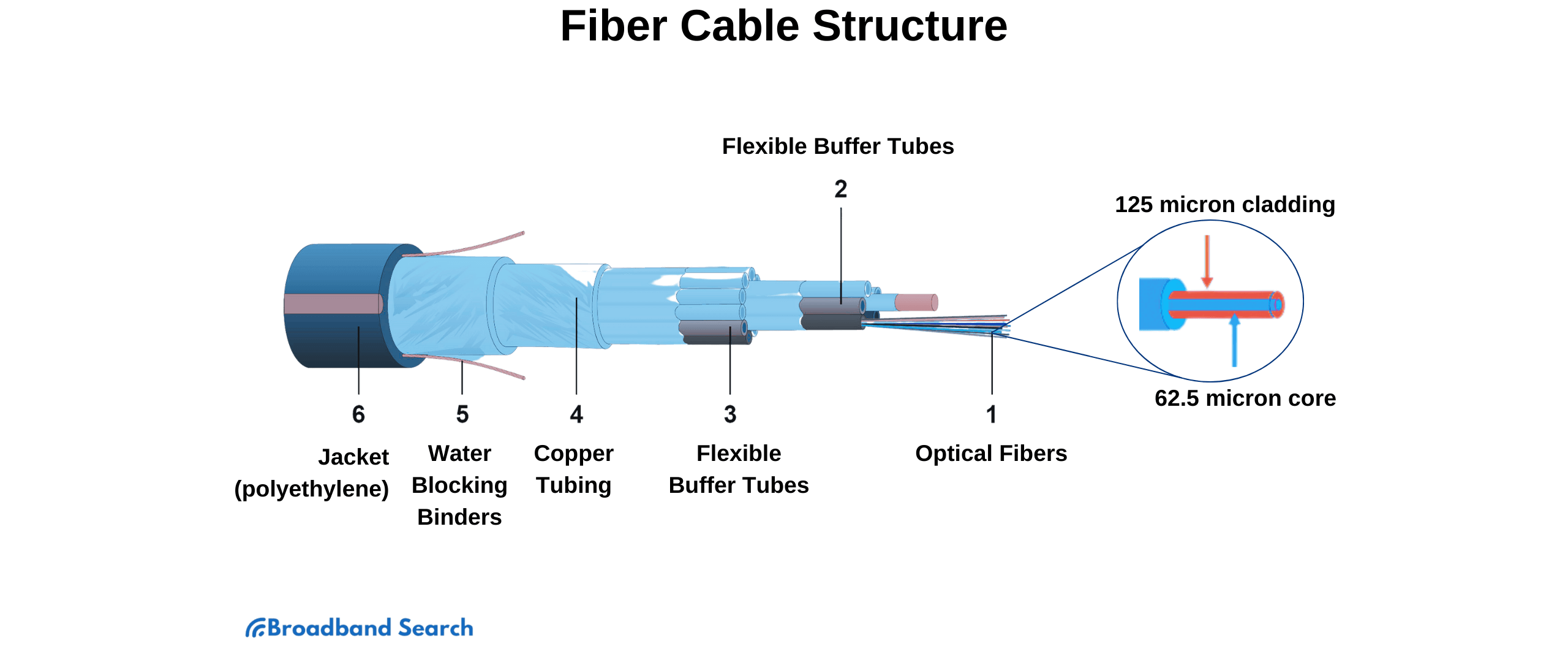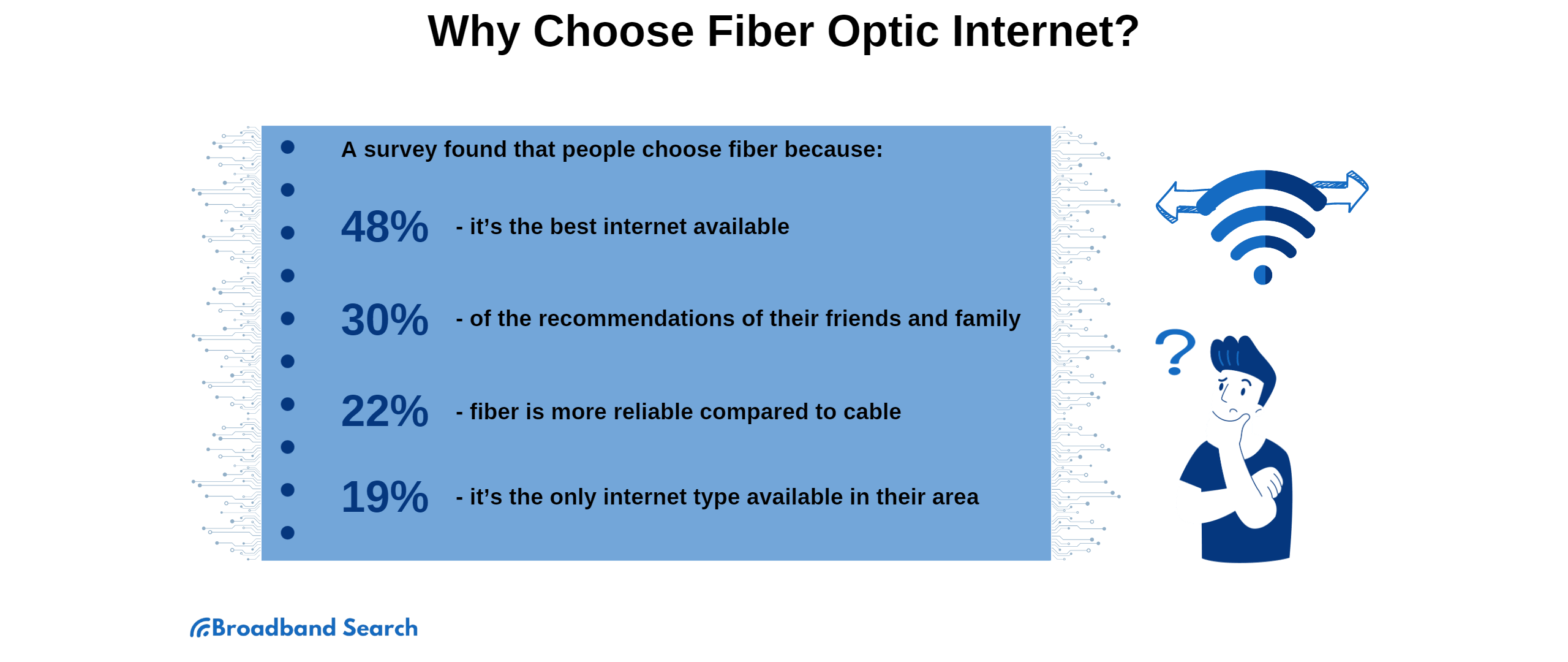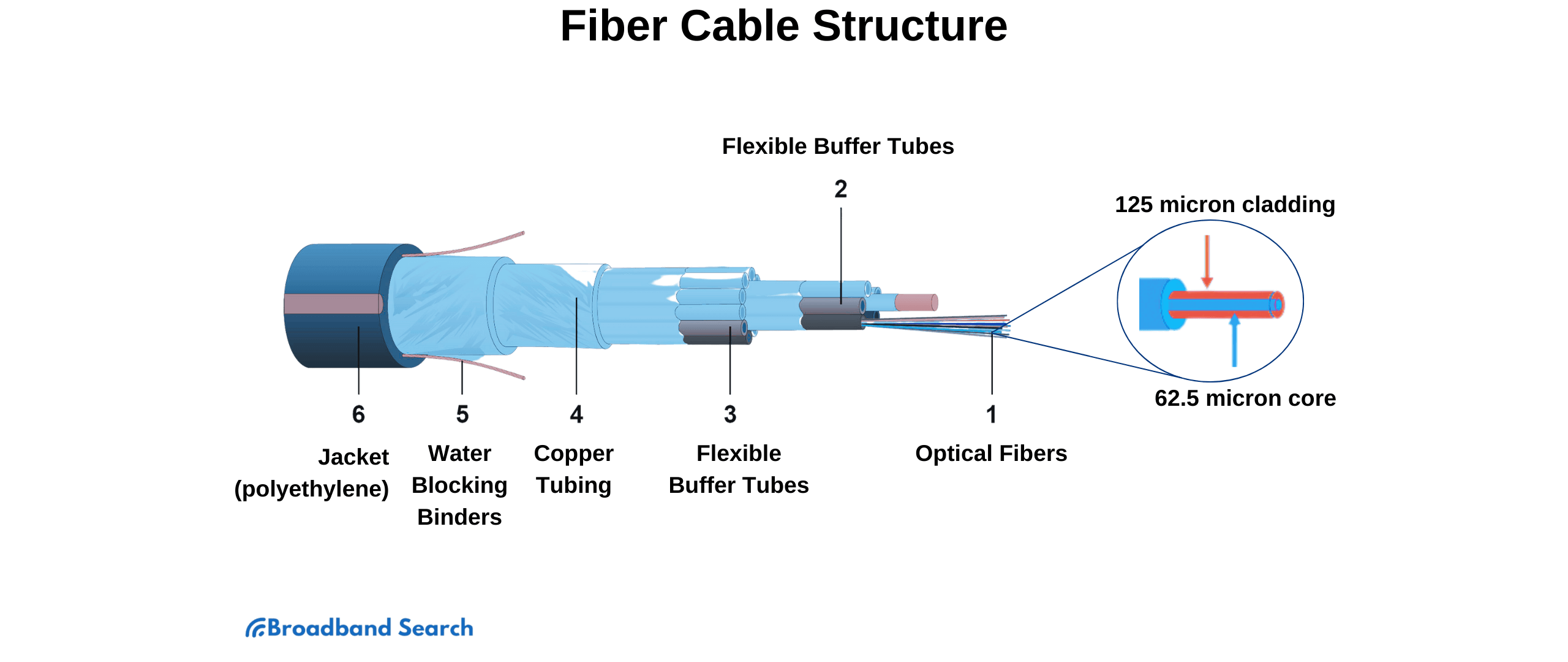Fiber optic cables are one of those things you might have heard of or know a bit of information about, but what are they exactly, and when and where are they used? They are a cable used primarily for data transmission that utilizes light pulses. We’ll talk more about what they are made from shortly, but they are used mainly for telecommunications, data transmission applications, and internet services.
They can do many of the jobs copper wires used to do when transmitting information, but they can do those jobs much more effectively. The main reason why copper wires aren’t entirely obsolete for these purposes is that fiber optic wires can be expensive upfront to install (they’re buried in the ground, typically), and they’re installed more often in urban and settled areas. There are efforts for further expansion, given the usefulness of fiber optic cables, but this will take time.
Yet to delay no further, here is what else you need to know about fiber optic cables and what can be done with them:
What is a Fiber Cable?
Fiber cables are made out of many glass or plastic strands. However, it should be noted that these strands are usually only the thickness of a human hair, meaning a cable is made of many strands with a coating that prevents signal loss. This allows for high bandwidth (many strands working in unison). The glass is exceptionally pure, allowing for transmission over long distances. The coated strands are then wrapped in a casing for protection from physical damage and a jacket for further protection.

Note that long-distance data transmission was a critical problem with fiber optics before the innovation of this pure glass. Fiber optic cables have only improved since their original creation, allowing even better signal retention, durability, and long-distance transmission.
What is Fiber Optics
Fiber optics is the technique or study of transmitting data in the form of light (photons) that pass through a fiber optic cable. Light particles move extremely quickly (nearly the speed of light in the cable). Fiber optics is a technology that uses this for various applications, many of which we’ll describe later. It has proven vital in many industries, and there is still a fair bit to master in the field. Researchers have been and will be studying fiber optics for decades, if not longer.
Types of Fiber Optic Cables
There is more than one type of fiber optic cable. The type of fiber optic cable is generally based on modes. This refers to the setup of the pulses of light used for data transmission (multiple pulses or a single pulse).
Here are the two main types of fiber optic cables and some of the main differences between them:
Single Mode Fiber (SMF)
This type of fiber optic cable uses a narrow glass fiber core. It allows a single mode of light to propagate. This means that less information can be transmitted at once, but there is less diminishing of signal strength over distance. It uses lasers to create the signal, and SMF is generally used for long-distance purposes.
Multi-Mode Fiber (MMF)
This type of fiber optic cable has a wide core, allowing multiple light modes to operate simultaneously. The rays travel concurrently, allowing more information to be transmitted simultaneously. However, the signal degrades more quickly over distance with this type of fiber optic cable. It uses either LEDs or lasers to create the light pulses used. It is usually used in short-range applications.
How Do Fiber Optic Cables Work?
While all this sounds fascinating, how exactly do fiber optic cables work? Generally, fiber optic cables transmit signals using light pulses created by either tiny lasers or light-emitting diodes. The cable is designed so that these light pulses continuously bounce off the core and cladding of the cable, making sure few to none of the pulses escape. The core is made of extremely pure glass that allows for long-distance and rapid data transmission. The cladding is made of glass or plastic and is coated around the strands, so light doesn’t escape or leak out.
Take special note that fiber optic cables use light to transmit information instead of electrical signals. This allows for faster transmission of data. Additionally, a wider range of frequencies can be used without signal loss compared to copper wire or satellite signals.
Applications of Fiber Optic Cables
What can fiber optic cables be used for? The obvious answer is the transmission of information, but what else is there, and to what extent can they be used for information transmission? Fiber optic cables used in communications systems can handle up to 2000 Mbps. An appropriate connection can download a two-hour movie in just 17 seconds. It’s more speed than most people will ever need and more than people in the past could ever dream of.

Here are some of the major related industries and use cases:
Telecommunications
The transfer of information is fundamentally what telecommunications is all about and what the technology is based on, so it is no surprise that fiber optic cables would have many telecommunications uses. Fiber cables were first used as the basis for landline phone systems after they were first developed. They have only gotten tougher challenges since then and have always met the needs, so long as enough cables were used and properly maintained. Fiber optic cables can easily handle multiple tasks and conversations at once.
Networking
You are likely already familiar with some of the networking uses of fiber optic cables. Few things can transfer information as they can, and now fiber optic network cabling is the foundation for much of our networking infrastructure. Fiber optic cables also allow for the more accurate transmission of data, leading to fewer lost data packets and fewer errors. There should be no substitutes for fiber optic cables when vital tasks are involved.
Internet and Cable TV
Fiber optic lines are central to the delivery of fiber optic internet service, and this is likely what you know them best for. They can transmit data at extremely fast speeds, and the light pulses used in fiber internet travel at 70 percent of the speed of light. It’s hard to find something better, and fiber internet and television data are the bar other service types try to beat (and fail).
Medical
As modern medicine requires the rapid transmission of information, fiber optic cables have a purpose in medical equipment. It allows the production of medical equipment and instruments that allow doctors to see inside patients and body parts without being as intrusive as they were in the past. Interestingly, fiber optics was historically developed as a science with medical applications in mind. Dentists, surgeons, and doctors alike sought ways to see into patients, and fiber optic wires are a great option compared to the alternatives. It is used for those reasons today.
Military and Space Applications
We don’t exactly have the schematics for everything, but given the amount of data used in space and military applications, fiber optic cables are often used in such applications. An optical fiber cable network has a high level of data security, making it suitable for keeping information (relatively) safe. They will be vital in defense and space exploration, and further uses will be explored as future needs arise.
Automotive
As our automobiles take on more qualities of computers and have more computer components, they will need to transmit more data internally and as quickly as possible. This is what a fiber optic cable is perfect for, and they make our cars better and safer. Currently, fiber optics are used in the vehicle's lighting systems and allows for better lighting systems, either directly or indirectly. Fiber cables save space when used in vehicles compared to other cables. That allows for better and safer car design and more space for additional features. They are used in both interior and exterior uses of vehicles, and further applications are inevitable.
Conclusion
Fiber optic cables are more than just cables that bring us internet service (though they do that very well). They’ve become essential to modern life and are critical components in many of our most valuable tools and possessions. And in truth, there is still much potential in fiber optic cables and technology left to be brought out. We hope you have a better idea of what fiber optics cables do and can do and have a greater working knowledge of them. Thank you for reading, and we encourage you to return to this page as you feel the need.
FAQ
What is dark fiber?
Generally speaking, dark fiber is fiber optic cables and infrastructure that have been laid out and might be ready for use but are not being used. There is no signal running through them, and they have a lot of potential in them. They aren’t used in traditional communications services, so they might be able to be used for private services or other purposes.
Cables themselves aren’t that expensive compared to the costs of laying them, so dark fiber would often be placed down in major areas in anticipation of a greater need. How it will be used down the line remains to be seen.
Does fiber use Cat6?
Fiber optic and Cat6 cabling are entirely different things. Fiber optic cables are what we discussed over the rest of the article, while Cat6 cables are ethernet cables that use twisted copper wires, specifically 4. Cat6 cables use the full capacity of the wire and can be more durable than fiber optic wires, requiring less maintenance.
Each will have its benefits and advantages, and we encourage you to look for a more detailed comparison if you are interested.
Which fiber connector is best?
It can vary based on the job required and the likely placement of the connector. There is no perfect option. If one is looking for a low-cost alternative, no polish and no epoxy options might be best. If ease of installation is most important, look for a polish and no epoxy option. Higher-end requirements that need precision signaling might call for APC fiber connectors. And there are so many more examples. We recommend you consider the use case and research from there.
Do all routers work with fiber?
No, which is why you should be careful to ensure everything works together when getting new internet service or a new router. Some routers (or modem/router combos) are generally made for DSL or cable internet, while others might be made specifically for fiber. Many models will work with practically any service type, but that doesn’t mean it is the default. Be sure to make sure your router is fiber compatible if you want to keep using it.
Can electricity damage fiber optics?
Not particularly. Fiber optic cables are immune to any damage from electromagnetic interference, which is a significant advantage over other cables used for internet service and other purposes. Fiber optic cables are often involved in systems that work with electricity but do not conduct electricity themselves. No heat or visible light comes off of them, so they are usually safe and more likely to get damaged from getting bent or physical means rather than electricity. People working with them need to remain cautious and not look directly at them or risk eye damage.

